Monumental Botanical Paintings Energized With Vibrant Electric Hues [Interview]
Fowler has focused on botanical subject matter for the past five years of his career. His choice of plants changes, but his selections are often personal; some have a historical connection to his Caribbean heritage, while others are plants he found on his travels. Just as with the plants he picks, he finds a lot of freedom in how he approaches each piece. “I can paint loosely, in an abstracted style, or use a tighter, realistic approach,” he tells My Modern Met. “I can add and modify compositions without feeling pressured by accuracy, proportions, or tone—this aligns perfectly with my style.” His use of color makes him feel good, and he hopes to imbue viewers with this emotion, too.
My Modern Met had the opportunity to speak with Fowler about his work, including how he got started painting flora in the first place. Scroll down for our exclusive interview.
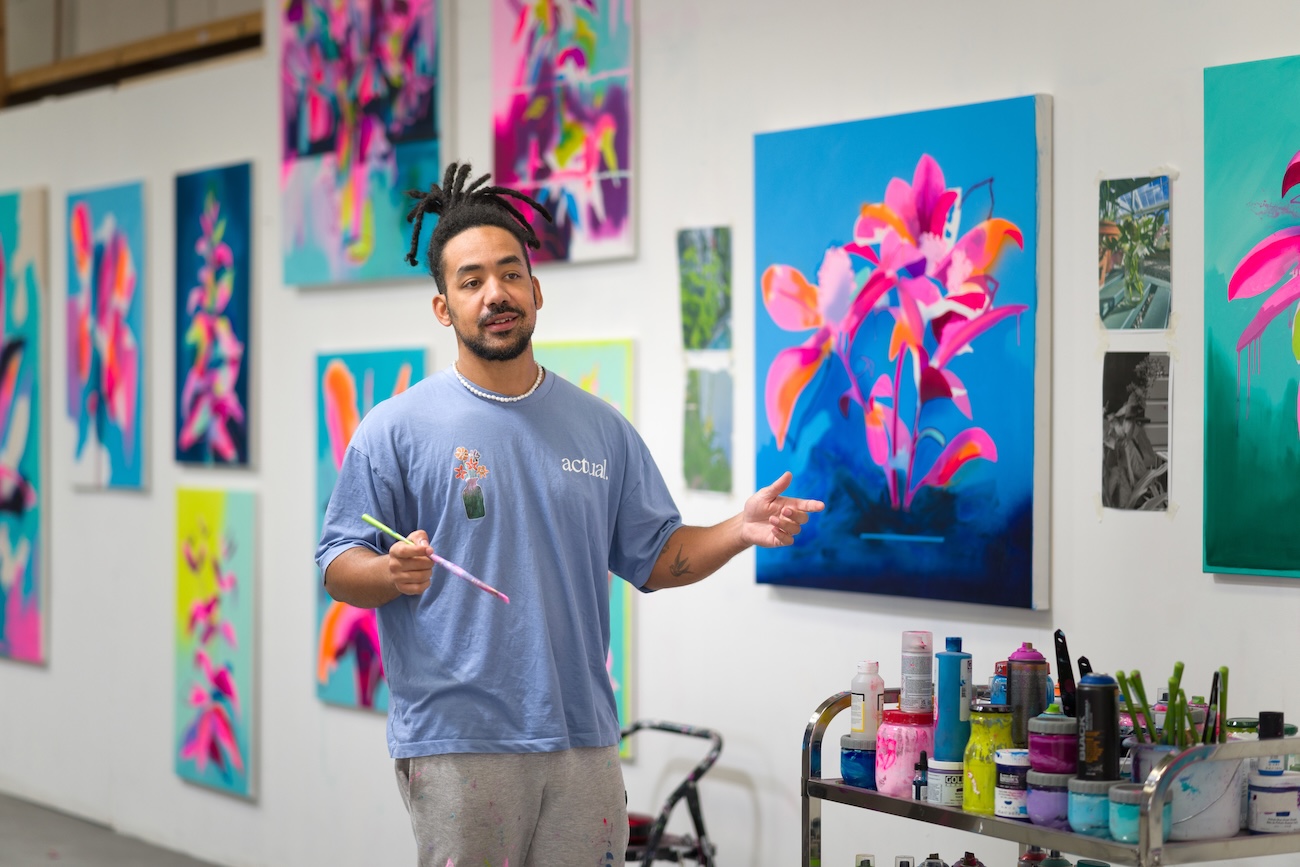
Studio Shot by John Rodney Ferguson
I studied Contemporary Fine Art at Sheffield Hallam University in the UK. I graduated in 2007 and consider my painting journey starting from that point. However, the moment I knew I wanted to be an artist came earlier. I was in my mid-teens and watched the 1996 film Basquiat. Up until then, the only artists I knew were Picasso and Van Gogh. As a young mixed-race kid of Caribbean heritage, I was in awe to see an artist who looked like me. Seeing him go from the streets to becoming a superstar of the art world—selling paintings and hanging out with celebrities—was something I didn’t even know was possible. From that moment, my goal was to make it a full-time profession.
While developing my practice, I did everything I could to get my work out there. I used social media, though this was before it became the tool it is today. I participated in small independent art fairs, open exhibitions, and organized my own shows. To support myself financially, I worked as a teaching assistant at a behavioral school. This gave me a steady income but also enough free time to focus on painting. The “real art world” is very different from studying at university, so I learned a lot about galleries and the business side of things along the way. Over the years, I gradually managed to get my work out there and started working with galleries, which led to bigger shows and collaborations with larger galleries both in the UK and internationally.
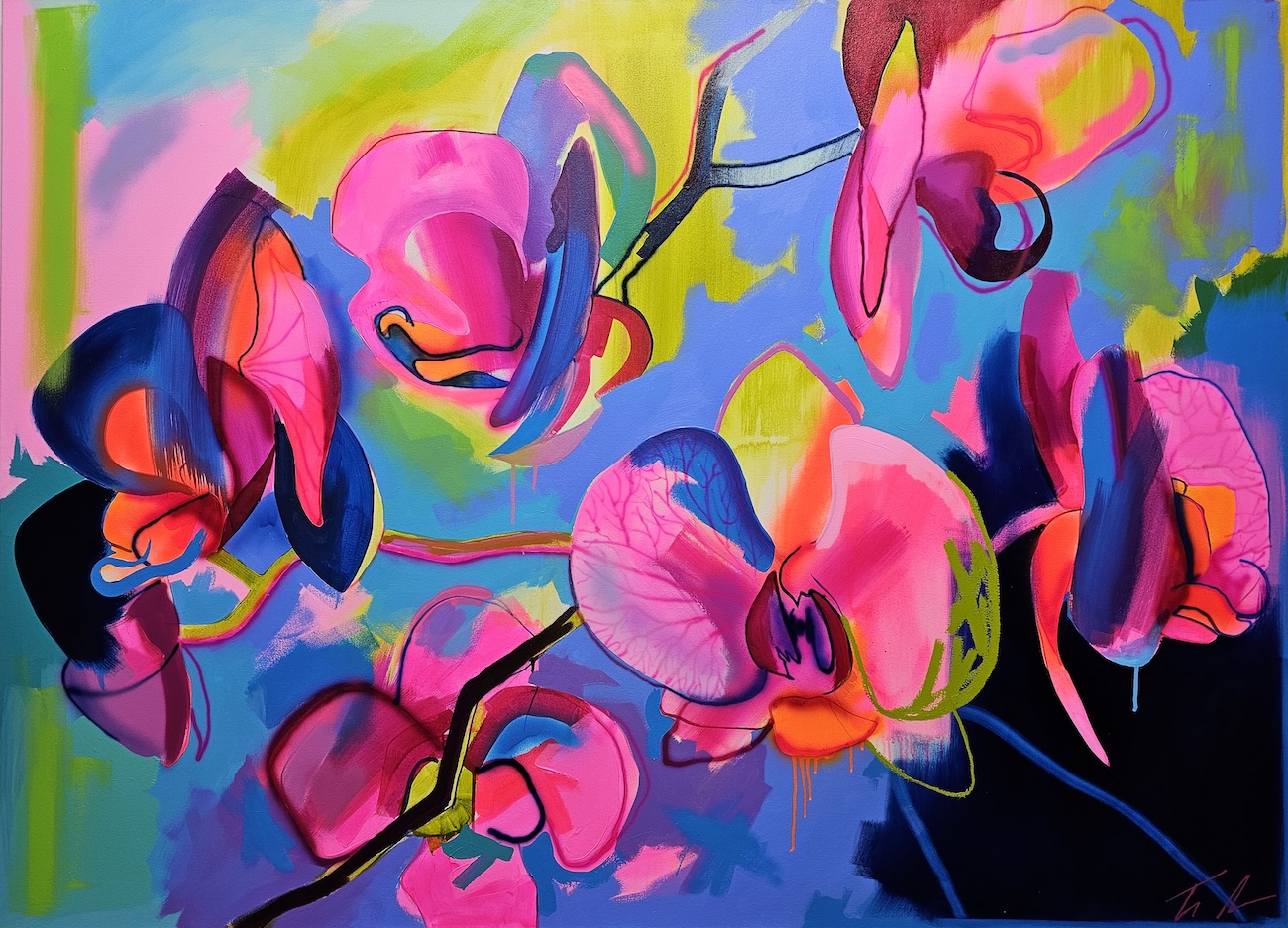
“Otherworldly Orchids”
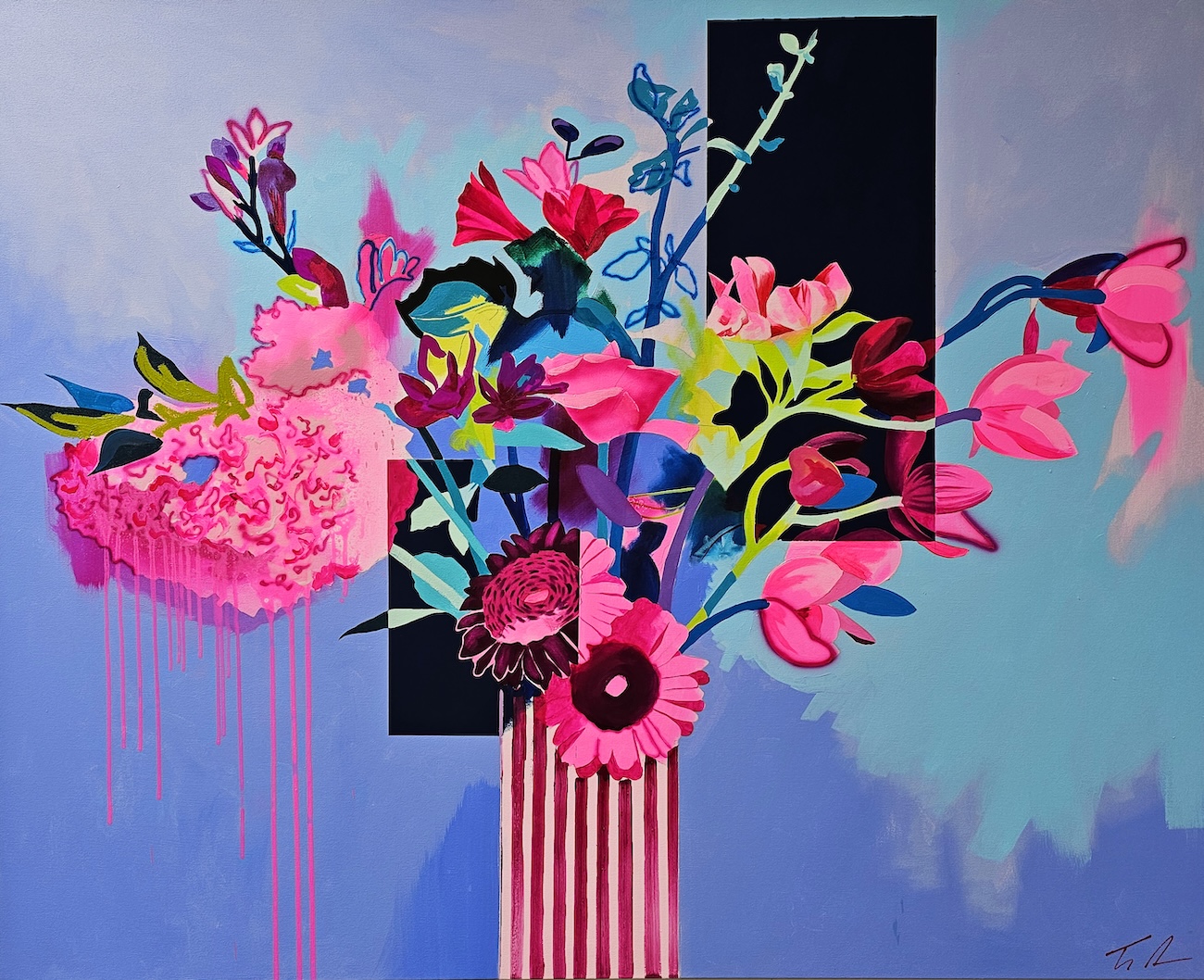
“Organic Lines”
For the past five years, I’ve been focusing on botanical subject matter. This has ranged from migratory and cash crops, plants with a historical connection to my heritage, plants from my travels, to more recent flora. It started when another artist brought some large banana plants into our shared studio space at the end of summer, preparing for the colder months. I quickly fell in love with their form and the way they grow and die. I began visiting botanical gardens, researching books on the subject, and traveling to tropical climates like Thailand and Barbados to take my own photos.
Now, I tend to switch between different categories of plants depending on my mood or the style of painting I want to create. I enjoy painting large canvases, some up to 9 meters (about 30 feet) long, for corporate buildings and public spaces, as well as smaller pieces for the home. What I enjoy most about painting botanicals is the freedom it gives me. I can paint loosely, in an abstracted style, or use a tighter, realistic approach. I can add and modify compositions without feeling pressured by accuracy, proportions, or tone—this aligns perfectly with my style. Most of my work is based directly on photos I’ve taken, but I also look at historical botanical illustrations. Recently, I’ve been creating mock-ups in Photoshop, editing them in abstract ways, and working from those as a starting point.

“Inverted Windows”
I’d describe my painting style as very dynamic. I find it hard to work on just one piece or to sit still. I tend to work on multiple paintings at different stages simultaneously. The biggest obstacle to my creative process is my own mind. If I’m struggling with a piece, I don’t force it; instead, I switch to another or start something new.
When I don’t know where a painting is headed, I accept that I can’t force it— sometimes I just need a break. If I’m waiting for a layer to dry, I move on to another part so I’m not wasting time. I dislike working in silence, so I often listen to audiobooks or creepypastas. I like being relaxed and working from an instinctive, gut reaction flow state. My brain tends to engage more once I’m back home and reviewing progress photos on my phone.
During studio days, I usually live off black coffee, rarely eating, and sometimes go to the gym to relieve stress and tension. I start a painting by blocking in areas of color with acrylic, often using spray paint to sketch out the composition and blend colors. I continue with acrylic but add oil and oil sticks towards the end.
Each medium has its own properties, texture, and finish, which I use carefully to complement or contrast each other. For large-scale paintings, I sometimes use unconventional tools like mops, fire extinguishers filled with paint, sprayers, and rags for mark-making. My work often doesn’t have a fixed finish point; I keep working until I feel satisfied.
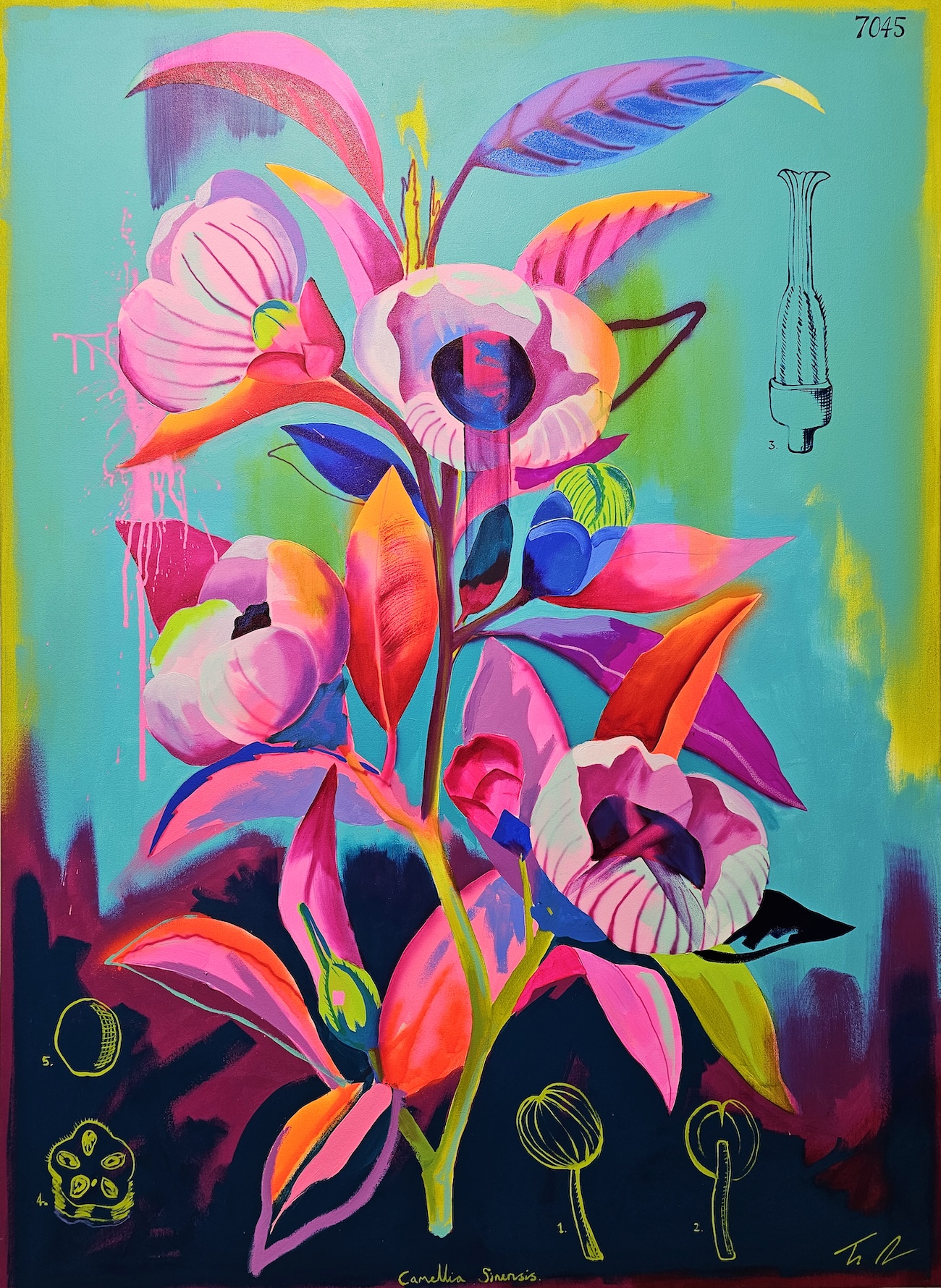
“Green Tea”
My bright color palette is a recognizable part of my style. People often ask how and why I choose these colors. There’s no specific reason—these are simply colors I’m drawn to. Over the years, my palette has evolved slightly, but pink is always present. I use vibrant colors thoughtfully, carefully placing them to create balance or contrast. I don’t just throw every color into a piece, because I want to avoid overpowering the work. For example, I might use a bright fluorescent pink next to a deep Prussian blue to anchor it.
Some may disagree with my color choices, but art is subjective, and ultimately, it’s my work. I believe my palette will continue to evolve, but I won’t force changes based on others’ opinions. To me, these colors are beautiful and positive; they make me feel calm when I look at them. I’ve been drawn to bright colors since childhood growing up in the 80s and 90s—fashion, advertising, nature, and other artworks all influence my choices subconsciously.
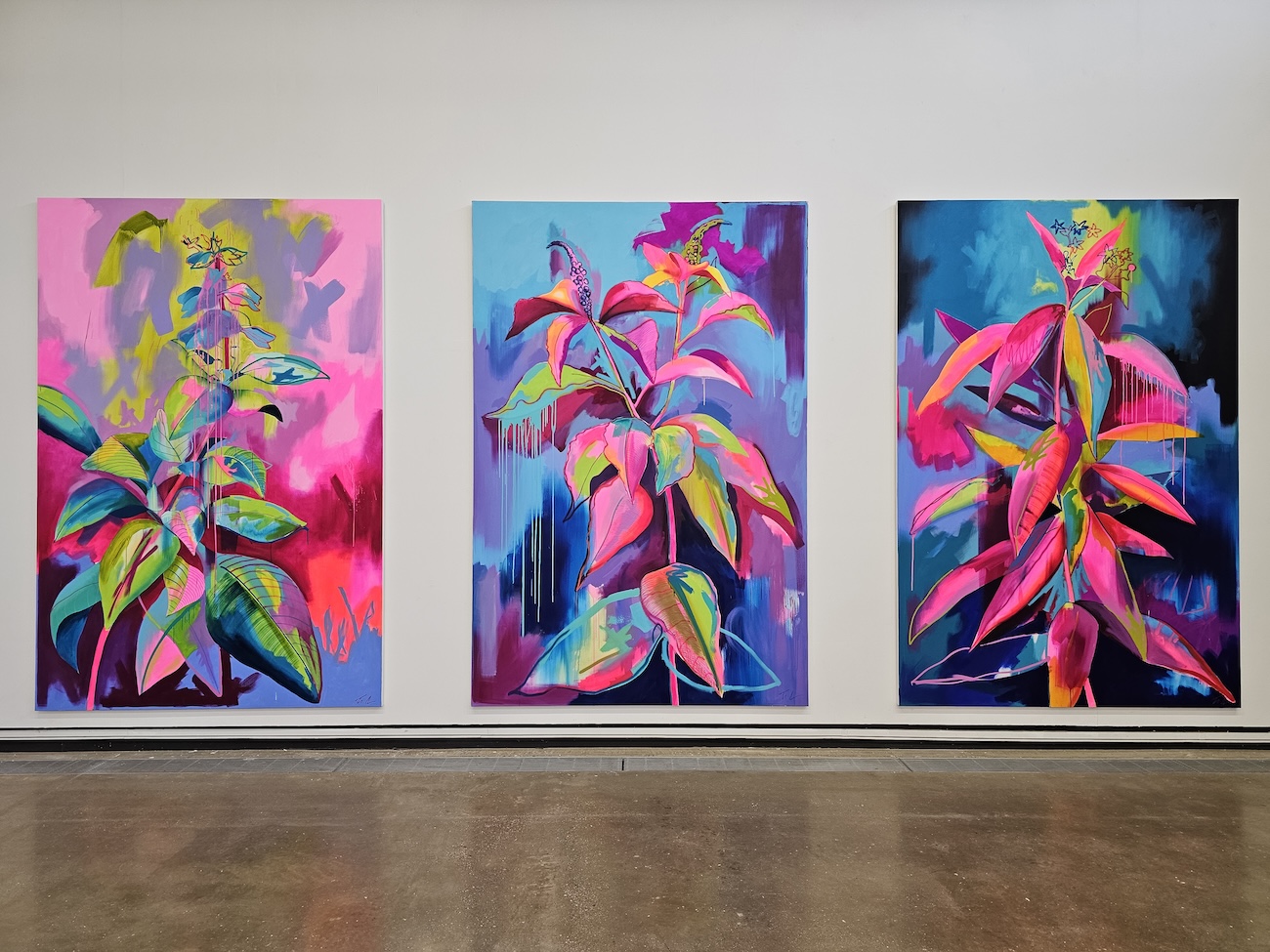
“Duppy Basil,” “Seaside Sage,’” “Tropical Milkweed”
It’s hard to pick just one, as it depends on my mood. Overall, I’d say my favorites are Duppy Basil, Seaside Sage, and Tropical Milkweed from my The Ground exhibition in 2024 at Attenborough Arts Centre in Leicester, UK. This exhibition focused on plants connected to Barbados, where my mum’s family is from. These three paintings are 2 meters by 3 meters (6.5 feet by 10 feet), created with acrylic, oil, spray paint, and oil sticks on canvas. Their large scale made a strong impact. Each plant has traditional medicinal uses in Bajan culture, adding an interesting layer to the work.

“The Ground Exhibition”
I want my art to leave a positive impact on viewers, the same feeling I get when I’m painting. I aim for my work to appeal to everyone— from young children who’ve never been to an art gallery to seasoned art experts and other artists. Art can sometimes seem intimidating or snobby, especially for those who haven’t studied it. I also hope to inspire others to try something creative—they often find it beneficial for mental health and overcoming struggles. At my shows, I meet people who used to study art or simply enjoy it, and my work has inspired them to reconnect with their creativity.

“Salvia”
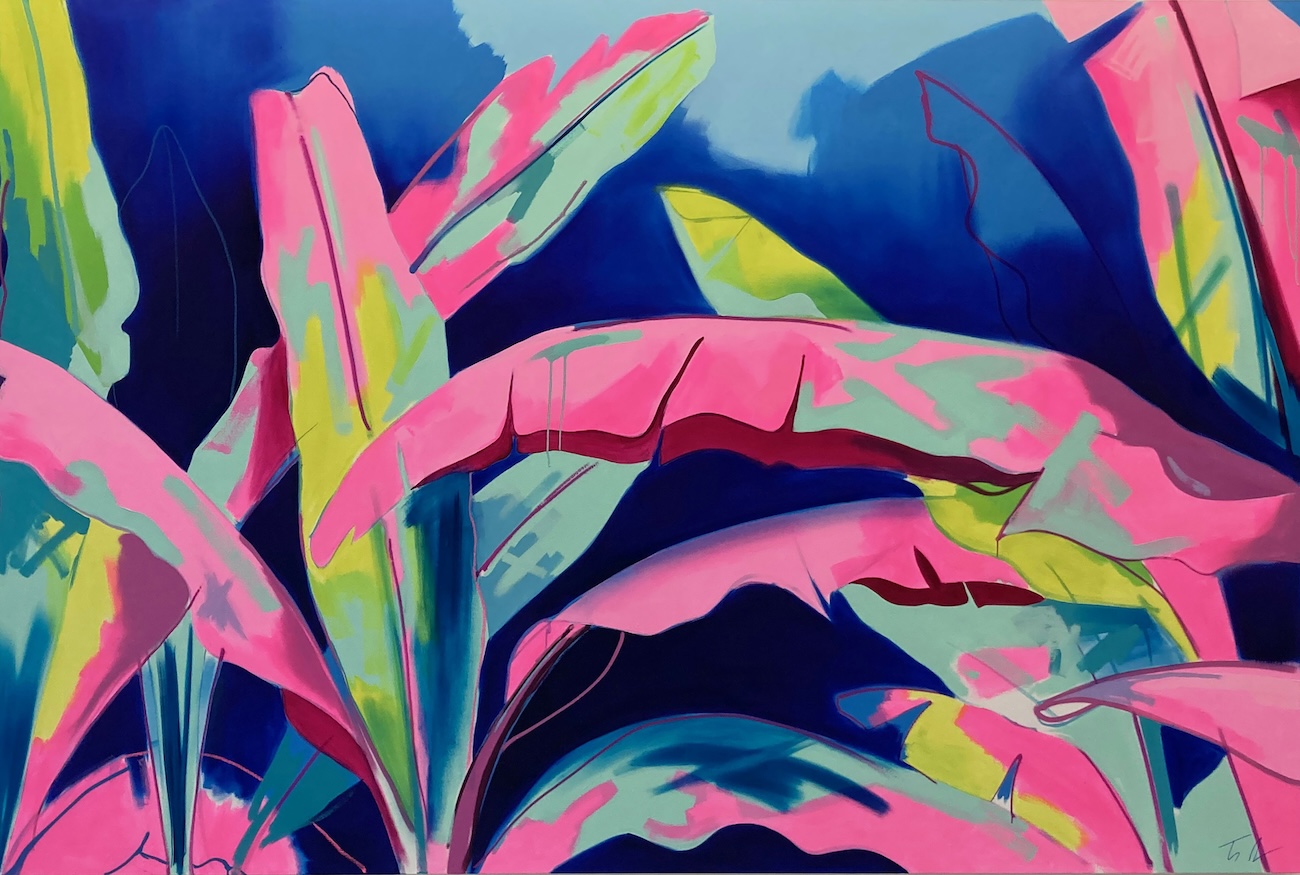
“Benin to Barbados”
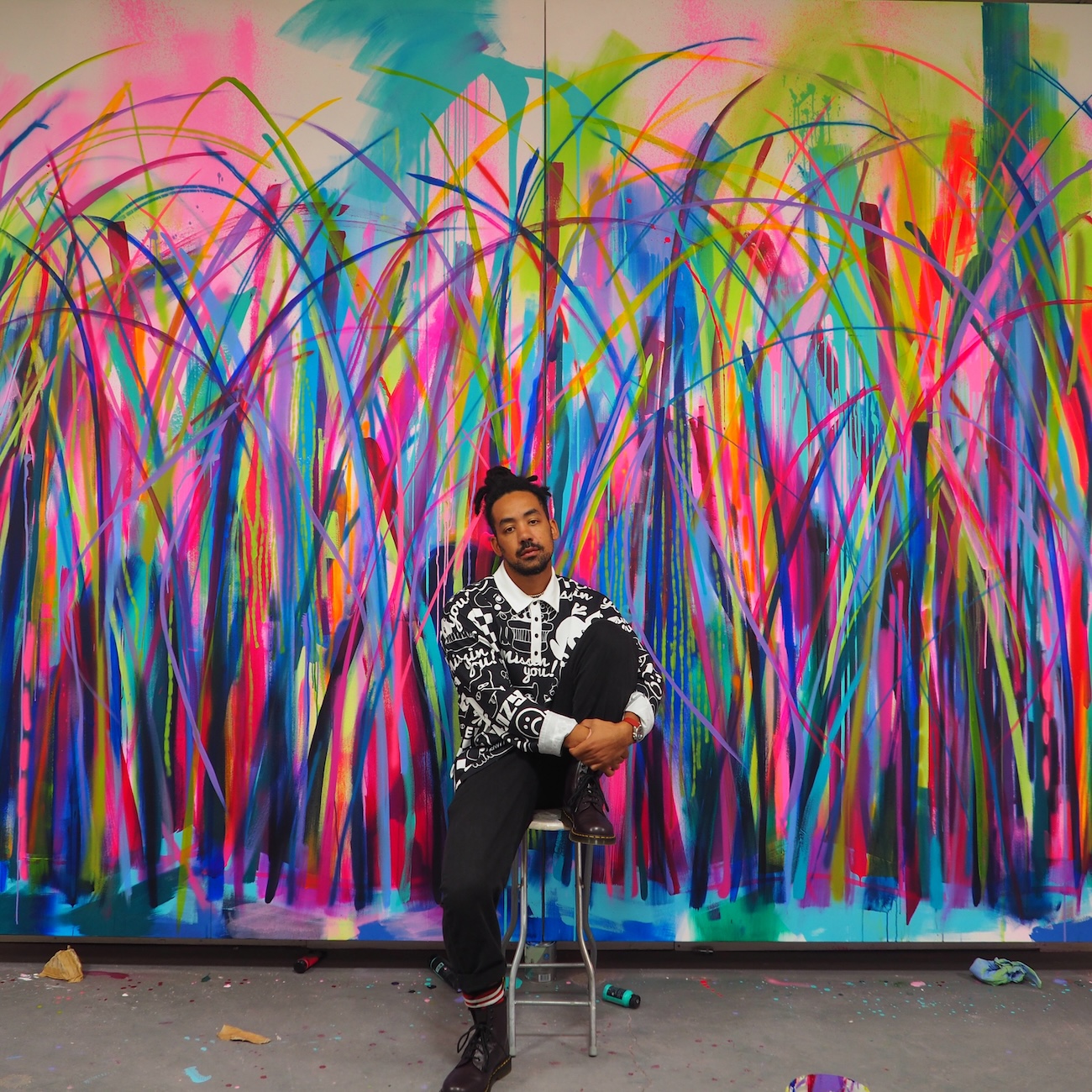
Tim Fowler in front of “Sugar Cane”
My Modern Met granted permission to feature photos by Tim Fowler.
Artist Shares Secrets To Creating Vibrant and Realistic Botanical Paintings of Flowers [Interview]
Whimsy Meets Mortality in Fantastical Paintings of Skeletons With Butterfly Wings
Surreal Paintings Visualize How the Public Masks We Wear Drip Away in Private [Interview]
Resin Sculptures Reimagine Painting With Brushstrokes Placed in Suspended Animation
Become a
My Modern Met Member
As a member, you'll join us in our effort to support the arts.







